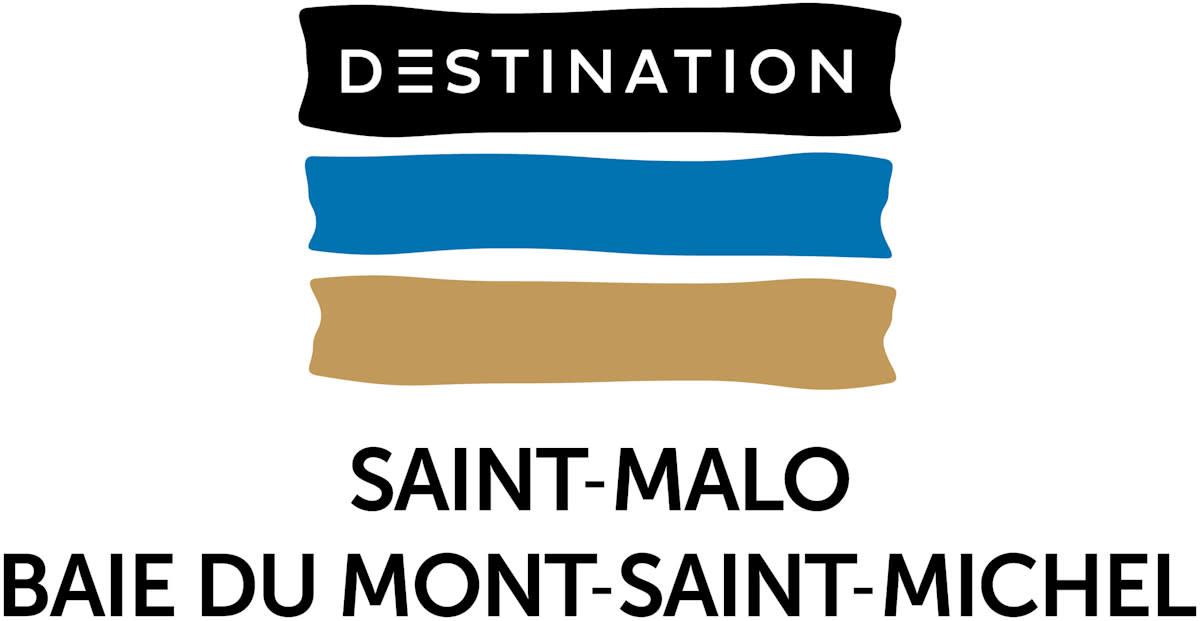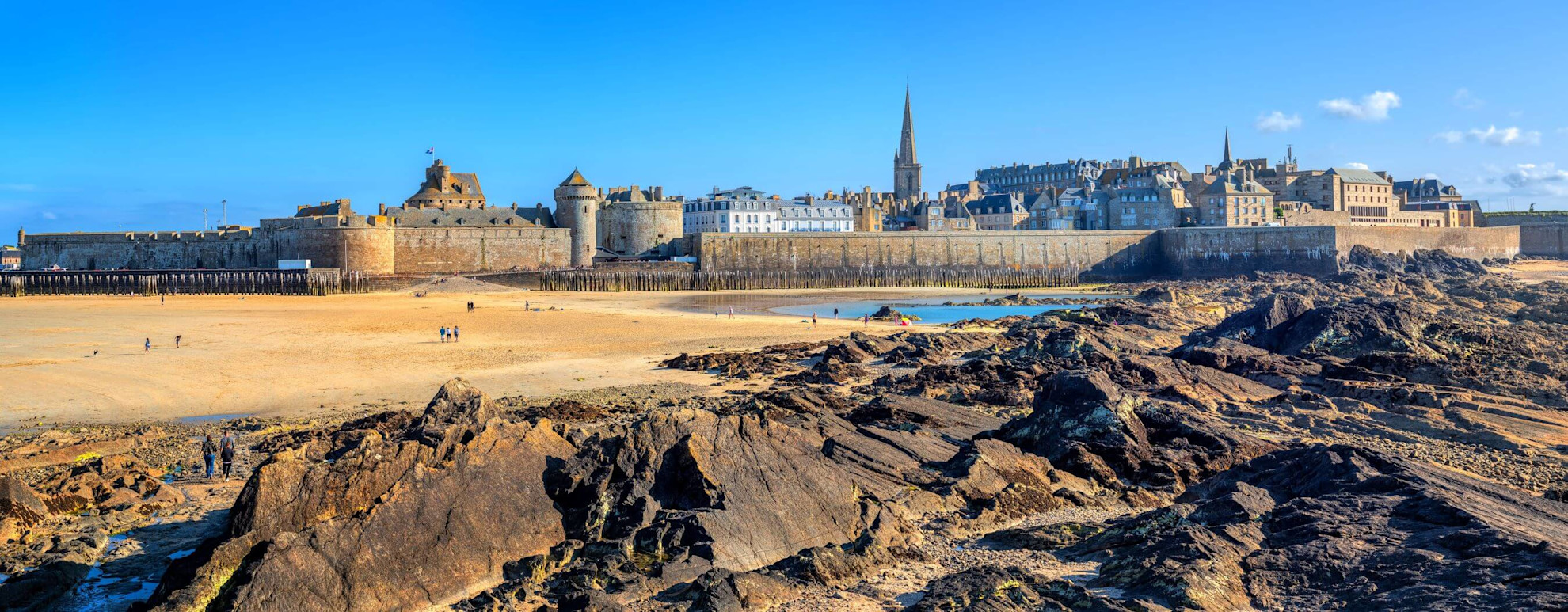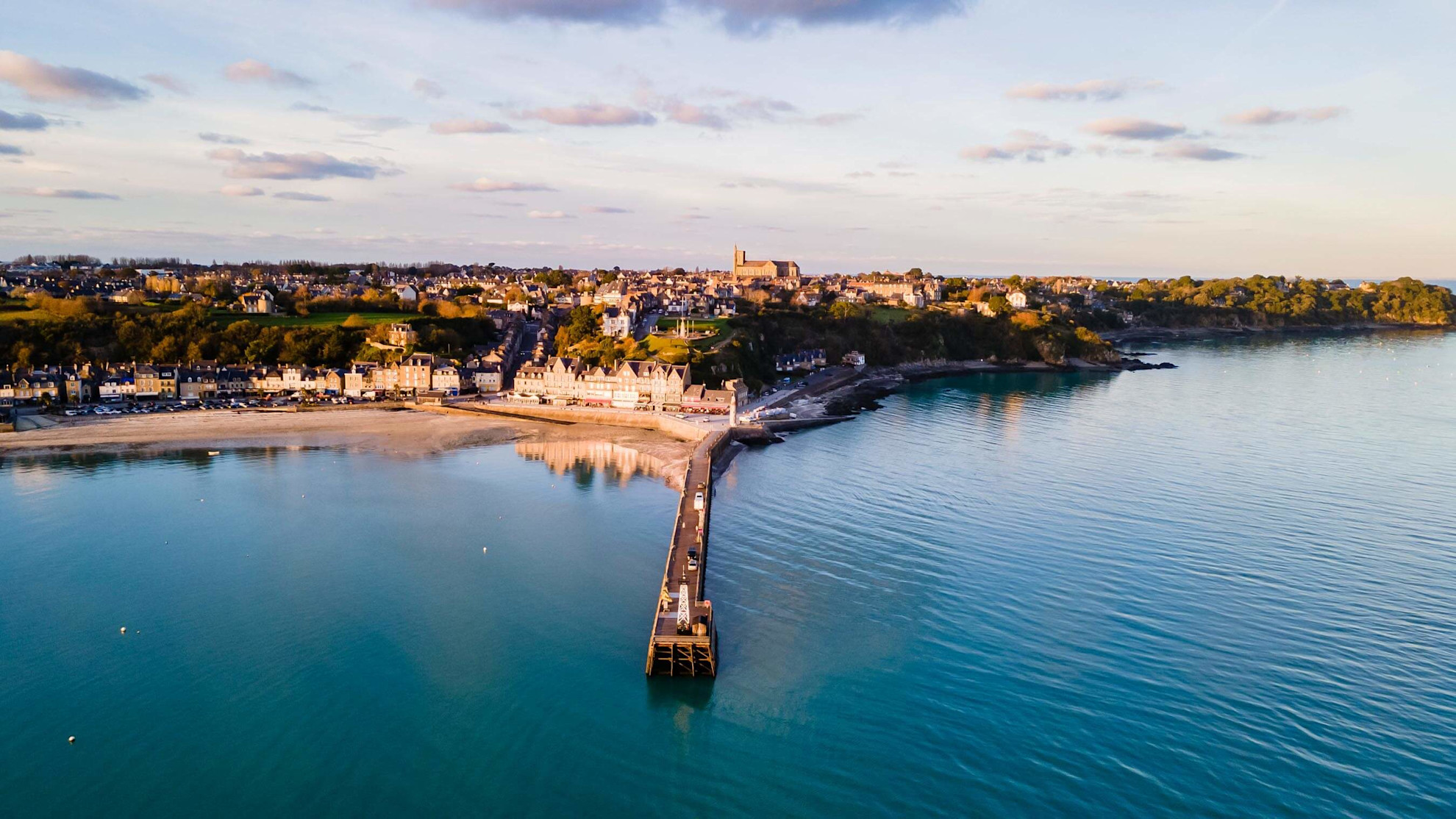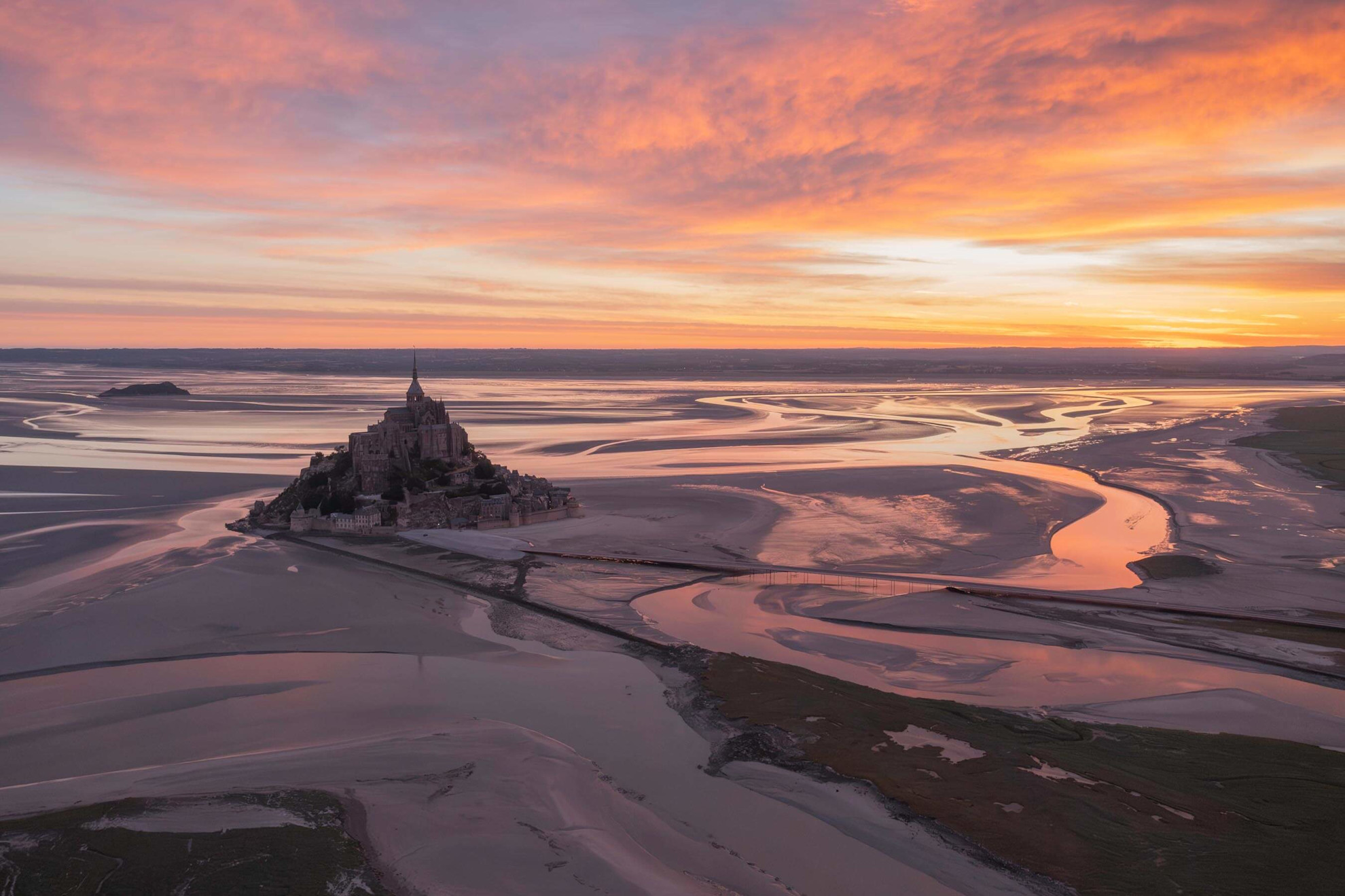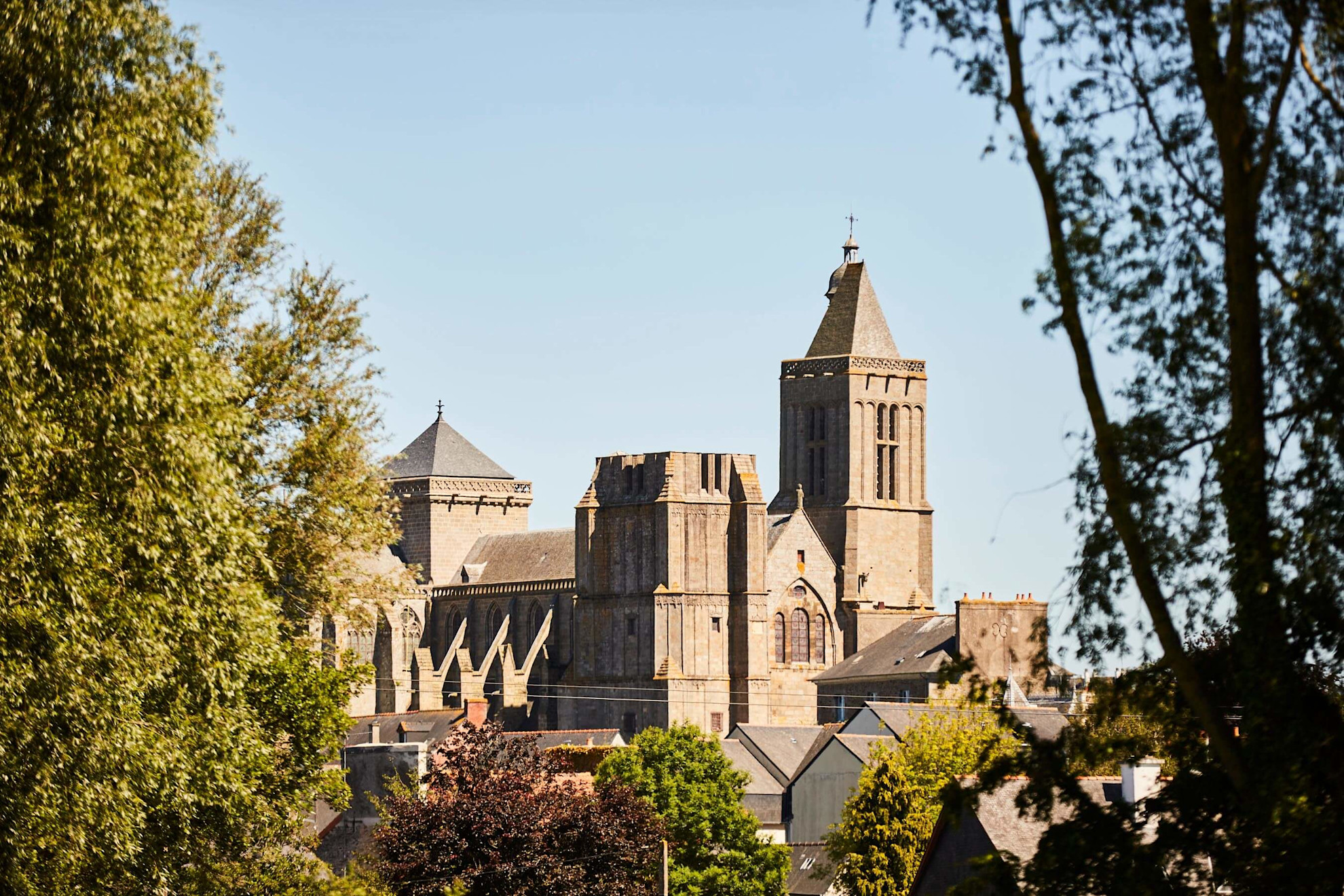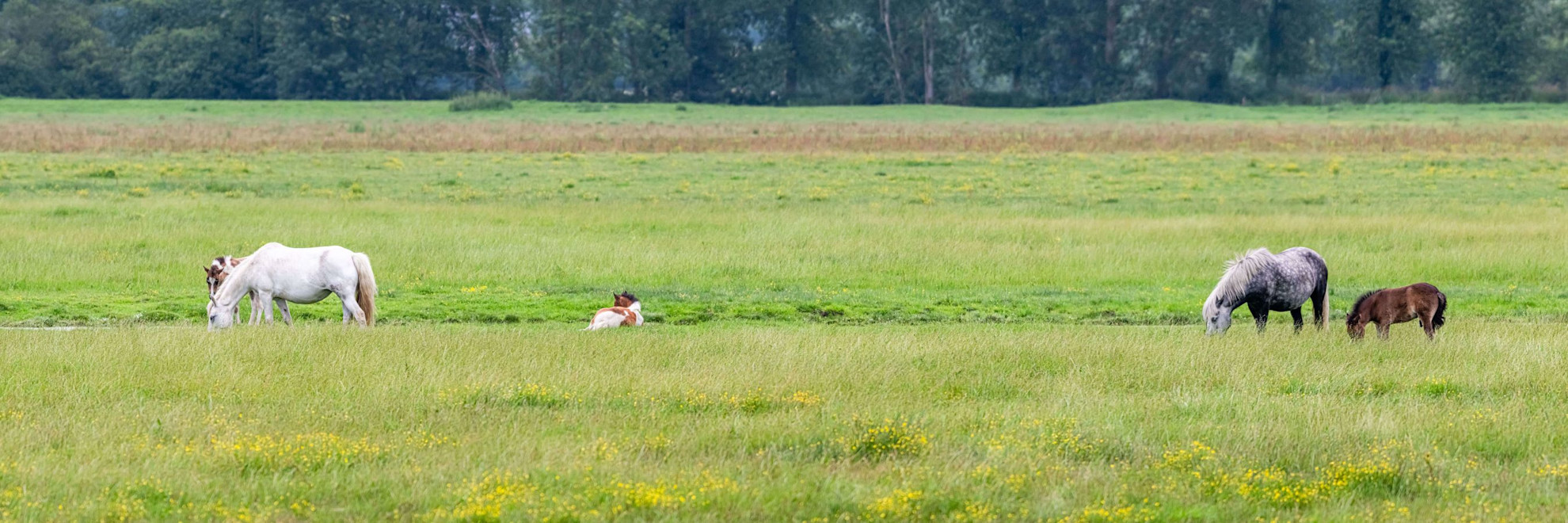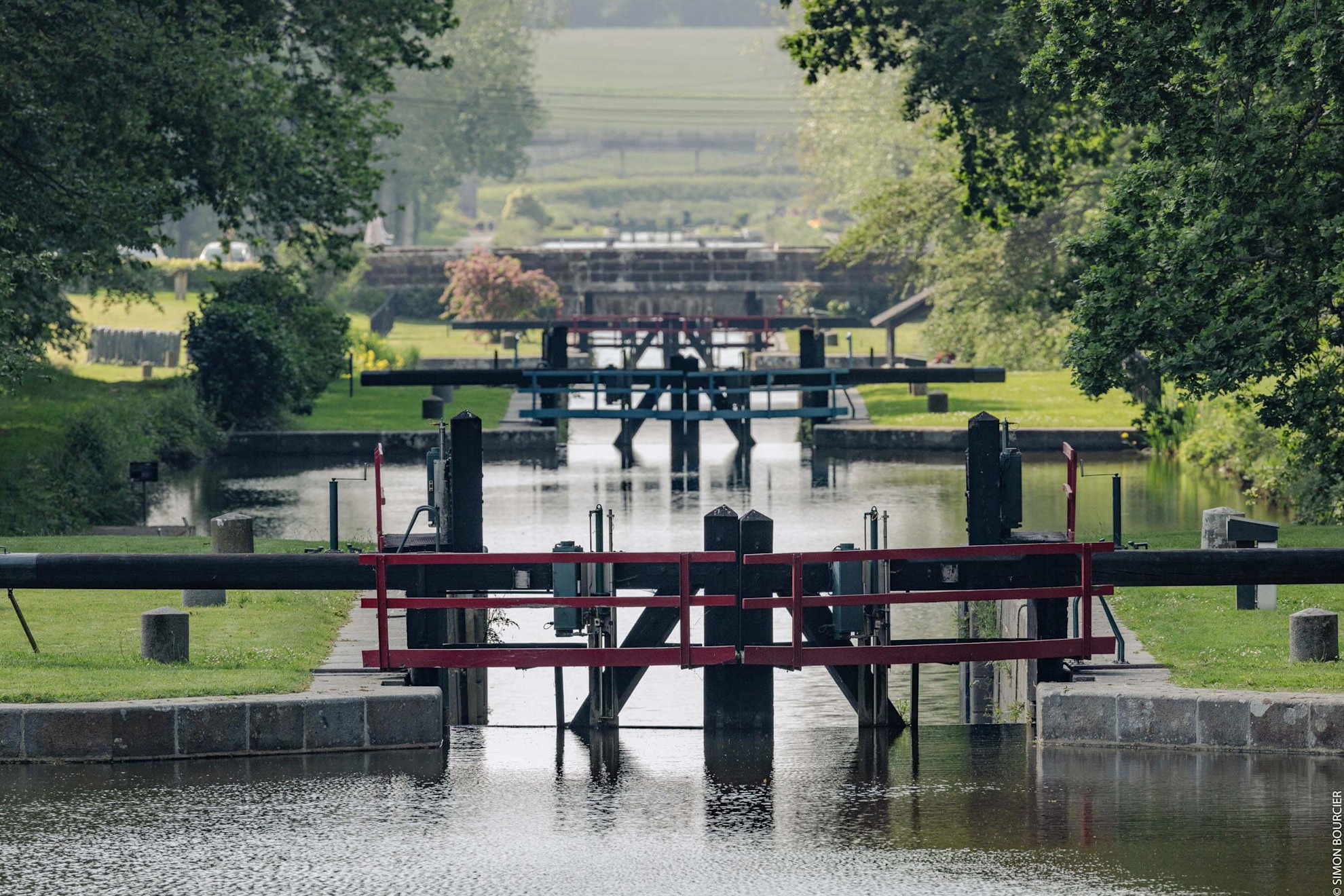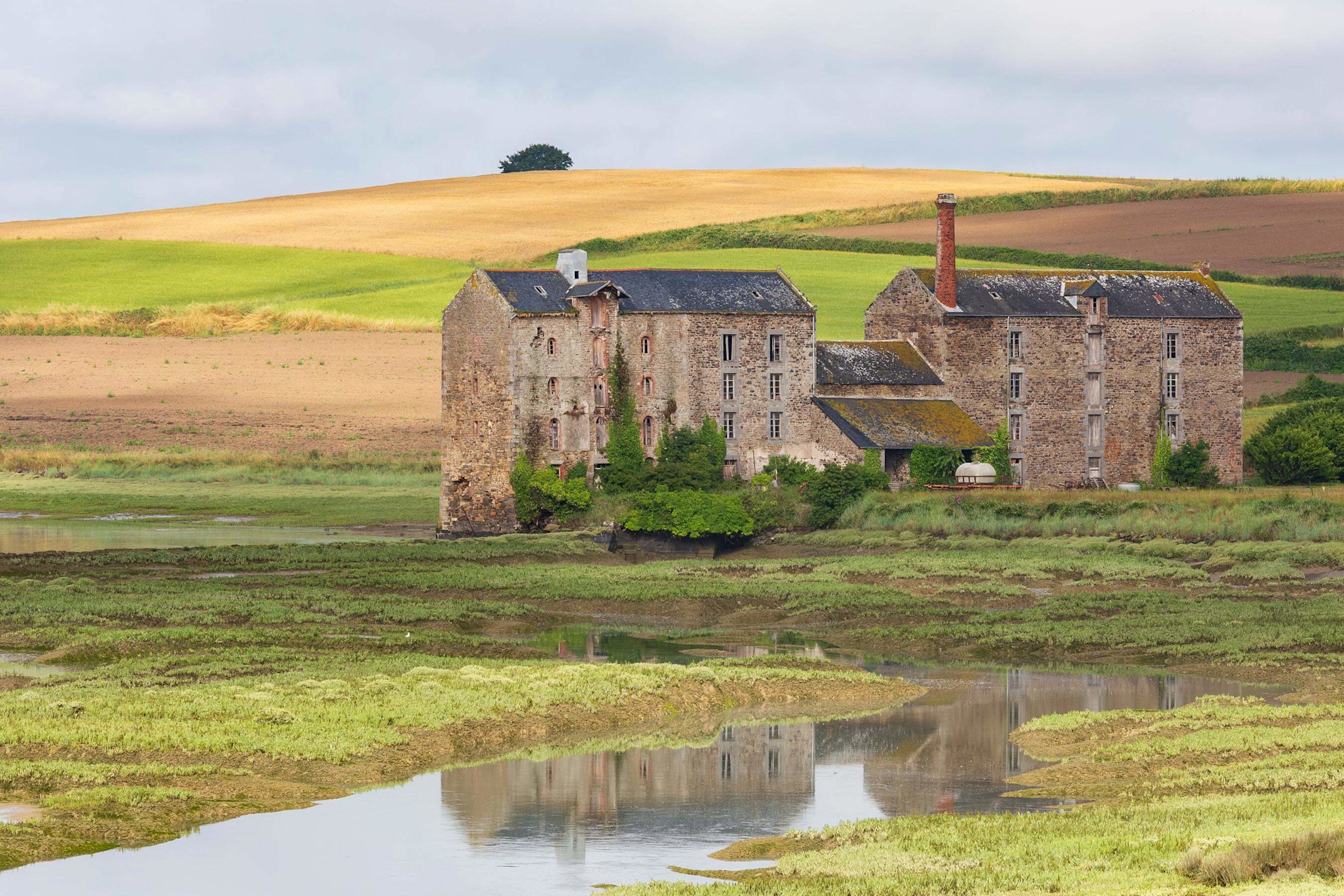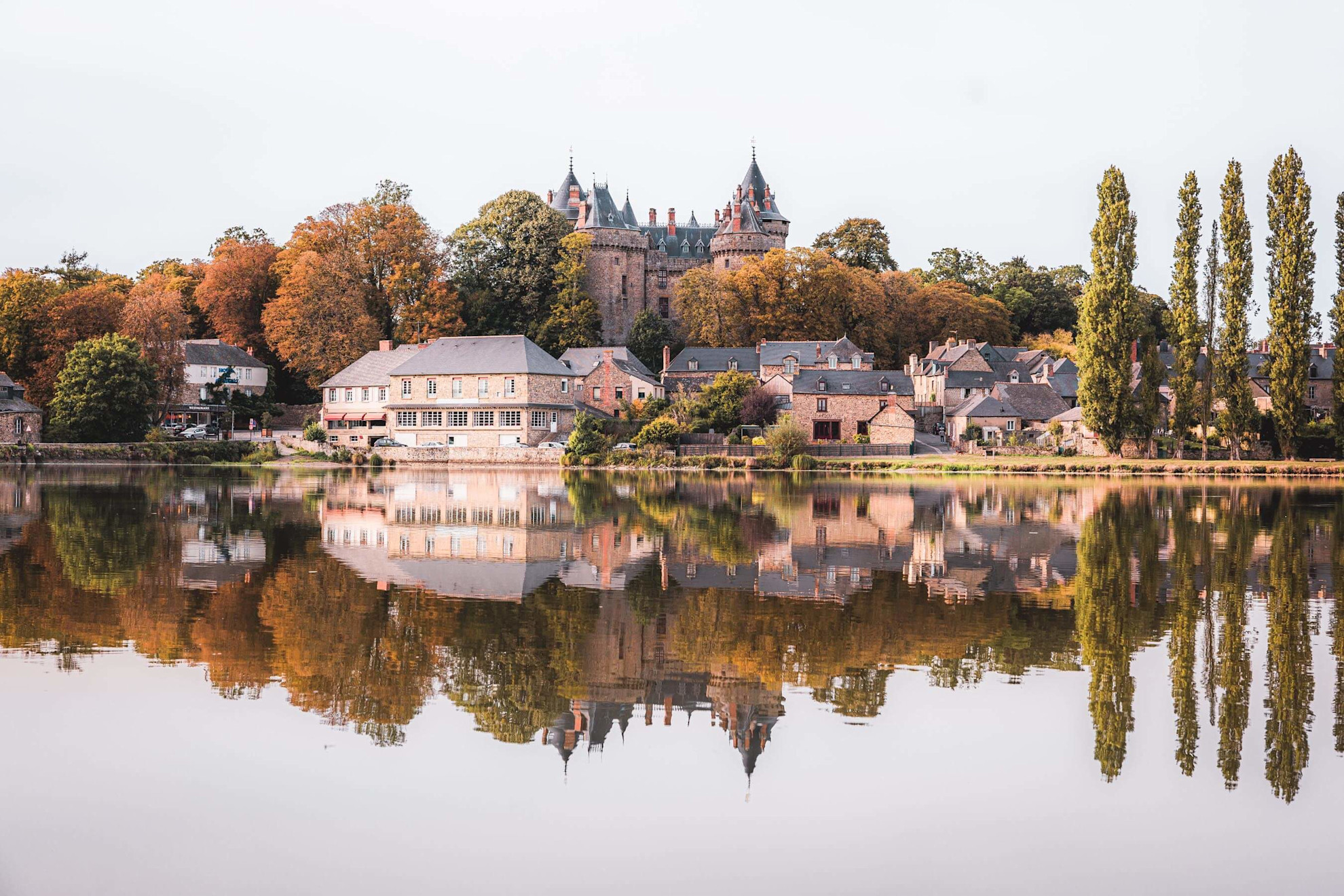
The 8 Treasures
Explore the 8 Treasures, magnificent and unspoilt places to discover, from Saint-Malo to the bay of Mont-Saint-Michel.
TRÉSOR N°1
St Malo is famous for its history of pirates and privateers
The Pirates’ Treasure
Saint-Malo gets its strong personality from its history, which is just as fascinating as the pirates there once were. With the English Channel on one side, and the Rance estuary on the other, the Pirate’s City has stood the test of time, nestled behind its ramparts.
But the city was actually founded 1 km from the headland, at the heart of Alet city, now known as Saint-Servan, when the monk Aaron came to the area. Further west, Paramé and its famous ‘Sillon’ and Rothéneuf are just as iconic, the latter setting the stage for the GR®34, and both playing a key role in Saint-Malo’s fantastic reputation. A multi-faceted city kept alive by its local residents.
A wellness destination
From the rising trend of sea bathing to high-end thalassotherapy centres, Saint-Malo has been embracing the wonders of its elements, revealed by its highly talented men and women, since the 19th century. Hiking through the sea, sunbathing, fresh sea air, in the great outdoors or at one of the spas or thermal baths, there are so many body treatments available, to really listen to your body.
TRÉSOR N°2
Cancale is renowned for its oysters
Pearls of the Coast
The Emerald Coast, land of legend and unspoilt nature
The distinctive shades that vary throughout the day as the sun’s rays bounce off the landscapes, can be admired in all seasons. Protected by the forts of the talented Vauban, watched over by the customs officer’s trail, the sea also provides for its people. Cancale Oysters, the farming of which is listed as ‘Intangible Heritage of France’, already featured on the tables of royalty several hundred years ago.
Oysters
Cancale Oysters were a favourite of King Francis I, and today can be enjoyed alongside the oyster beds directly from the producers, at the Oyster Market at the Port de la Houle.
Whether flat or cupped, the expert know-how from these farms earned Cancale the Site Remarquable du Goût (place of remarkable taste) classification.
GR®34
The most Breton of the French GR® long-distance hiking trails guides walkers past the most beautiful viewpoints along Brittany’s coastline. The 0 marker is in Cancale, at the Pointe des Crolles and this is where the 2,000 km of this unmissable hiking trail begins.
Malouinières
The shipowners of Saint-Malo may work within the walls of the city, but you’ll have to venture out into the Pays de Saint-Malo countryside to find their manor houses. Unique architectural heritage in France, the Malouinières bear witness to the lavish history of these formal residences, with woodwork, decoration inspired by travels across the seven seas and elegant, French- style gardens.
TRÉSOR N°3
The magnificent Mont St Michel and surrounding bay at sunrise
The Golden Bay
With a tidal range of 13 metres, Mont-Saint-Michel Bay is proud to boast the biggest tides in Europe.
The waters flowing back and forth create an environment for exceptional shellfish, classified with a PDO Mont- Saint-Michel Bay bouchot mussels. These meaty and tasty mussels can be enjoyed directly from the mussel farmers, surrounded by the distinctive golden brown shades of the bay.
PDO (mussels and lamb)
Text BoxThanks to the unique climatic conditions and mineral-rich elements, the ‘PDO Mont-Saint-Michel Bay bouchot mussels’ and ‘lamb from the salt meadows of Mont-Saint-Michel Bay’ are key assets to the rich local gourmet heritage.
VéloMaritime®
The EuroVélo4®, also known as the EV4 runs from Roscoff to Dunkirk and around forty kilometres of the route are in the Bay, past the shellfish farms, the windmills and salt meadows that are all iconic to this natural environment.
Sand yachting
Sand yachting is a popular activity in Mont-Saint-Michel Bay thanks to the perfect wind conditions and ideal terrain: the foreshore. The Mont-Saint-Michel stands in the background, making this such a unique place.
TRÉSOR N°4
Cathedrale Saint-Samson, Dol-de-Bretagne
The Shimmering City
In the footsteps of Saint Samson, one of the seven saints who founded Brittany: the cathedral of Dol-de-Bretagne, named after him, represents the importance of the Petite Cité de Caractère® (charming little town) in Brittany in the 13th century.
It stands proudly over the paved streets lined with half- timbered houses, brought to life by the many bustling shops in the area. In the distance is Mont-Dol mound, a unique geological feature that stands 65 metres over Mont-Saint-Michel Bay. According to legend, the devil and the archangel once did battle there...
Dol-de-Bretagne
Dol-de-Bretagne is a lively town with a great number of shops, yet it has kept the traces of its past by preserving the half-timbered houses that are key to the heritage of this former bishopric. The cathedral and adjoining museum, CathédralOscope, showcase the expert know-how of those who built religious monuments, from the Romanesque to the flamboyant Gothic style.
Mont-Dol
A unique geological feature close to the Mont-Saint-Michel, offering an unmatched view across the Bay. The bones of sabre- toothed tigers and mammoths found in the former quarries bear witness to the Prehistoric past of this site.
The Abbey of Notre-dame du Tronchet
On the edge of Mesnil forest where Robert Surcouf would go to hunt, Tronchet abbey was inhabited by a religious community from the 12th century. The 17th-century abbey has fallen into ruin over the centuries, and the remnants of the monument can be visited. The manor of the abbey dates back to the 13th century.
TRÉSOR N°5
Marais de Sougeal is a haven for wildlife
The Rugged Gem
A choice stopover for migratory birds in winter, kingdom of the magical dragonflies in spring, oasis of lush greenery for all of Mother Nature’s species...
The Marais de Sougeal is classified as a Remarkable Area of Brittany and is a popular place for bird and nature lovers who enjoy the discoveries of their silent observations, as their gaze embraces the peaceful surroundings.
Marais de Sougéal et la maison du marais
The 175 hectares of the marshland boast incredible biodiversity: it is one of the most prominent spawning grounds for pike in Brittany, is a stopover for around sixty species of migratory birds during their courtship season, and 5 species of amphibians and 360 species of flowers, dragonflies and damselflies have all been recorded here.
Rural Heritage of Brittany Town
Pleine-Fougères has been inhabited since the 5th millennium, as shown by the Roche-Buquey megalith. According to tradition, this menhir fell from the sky to separate two brothers engaged in a fratricidal struggle. The town was awarded the Commune du Patrimoine Rural de Bretagne (Rural Heritage of Brittany Town), thanks to the quality and level of conservation of the architectural and landscape heritage of Pleine-Fougères.
TRÉSOR N°6
Château de Combourg in autumn
The Romantic Fortress
‘Memoirs from Beyond the Grave’ illustrate the historic connection between Combourg and its famous writer, François-René de Chateaubriand.
The Château welcomed him during his childhood, and today still continues to watch over the Petite Cité de Caractère® (charming little town) from its grounds.
François-René de Chateaubriand
François-René de Chateaubriand was born and buried in Saint- Malo. He went to high school in Dol-de-Bretagne and spent his childhood at the Château de Combourg. The austere way of life on the family estate left an indelible mark on the Romanticism.
Lanhélin blue granite
What do the Cité des Sciences de la Villette, the Bank of China in Hong-Kong and the Place de l’Hôtel de Ville in Paris all have in common? The three sites were paved in Lanhélin blue granite! This granite has even been certified with a geographical indication which guarantees the origin of the product.
The château is set in the midst of 25 hectares of English-style gardens, a stone’s throw from the town centre, and was completely restored in the 19th century in a Gothic Revival architectural style, influenced by famous architect Eugène Viollet-le-Duc.
TRÉSOR N°7
The construction of the Ille-et-Rance canal was ordered by Napoleon
The Green Diamond
The Ille-et-Rance canal runs through the region’s green lung, and a section of the towpath is part of the peaceful greenway that links the Atlantic and the English Channel.
It was built under Napoleon and this fascinating construction can be explored on a bike ride or walk along the towpath. The eleven impressive locks are still in working order today, so that canal boats can adventure along the canal and cover the differences in height, along the water.
Canal d’Ille-et-Rance / EV2
Napoleon had requested the construction of the canal for the transport of goods, but it was soon replaced by the developing railroads. It is now a feature of the superb route between the English Channel and the Atlantic, well-known by bicycle touring enthusiasts as the EuroVélo2®.
Beautiful churches
The twisted spire at the church of Saint-Pierre Saint-Paul in Québriac, the bell tower in Cornish-style stone, Gothic treasure of Brittany at the church of Saint-Ouen des Iffs, the monumental church of Sainte-Trinité Notre-Dame de Tinténiac, the surprising church of Trois-Marie de Cardroc and its magnificent ceiling in the shape of an upside-down hull... The religious monuments of Romantic Brittany have surprising, unique characteristics.
Eleven Locks
11 locks, 2.1 km and 27 metres difference in height! These figures are proof of the ingenuity of the labourers who managed to adapt the plans for the canal to the rolling hills of Hédé- Bazouges.
TRÉSOR N°8
A tide mill on the Rance Estuary, Brittany
The Jewels of the Rance
The tide mills bear witness to the past and yet were ahead of their time. They can be seen in the waters of the Rance and estuary.
The nearby town of Saint-Suliac, a classified Plus Beaux Villages de France® (one of the most beautiful villages of France), is characterised by its narrow streets leading down to the riverbanks, overlooked by its charming church and churchyard, and keeps alive the memory of the proud Terre-neuvas fishermen.
Tide Mills
As opposed to windmills, the mills on the banks of the Rance were operated by the power of the tides. Beauchet and Quinard mills attest to this ancient technique.
Terre-Neuvas
These cod fishermen were also known as the ‘slaves of the sea’ and they would be out at sea for many months, off the coast of Newfoundland (Terre-Neuve in French).
In the era of sailing boats, the terre-neuvas would pull the nets onto their small traditional sailing boats, the so-called doris, before then taking their catch to the main boat, known as the morutier. This was hard work and would leave a lasting mark on the character of the locals of Saint-Suliac and many other villages whose locals would leave for the ‘great fishing trip’.
PORTRAIT
Recommendations, networking, advice and welcome services, Lisa is your go-to contact to find out all you need to know to prepare your project. She moved to Cancale and fell in love with the place, and this expert of the Destination will be delighted to share some anecdotes with you, and tell you all about the Unspoilt Treasures, including some surprising facts.
